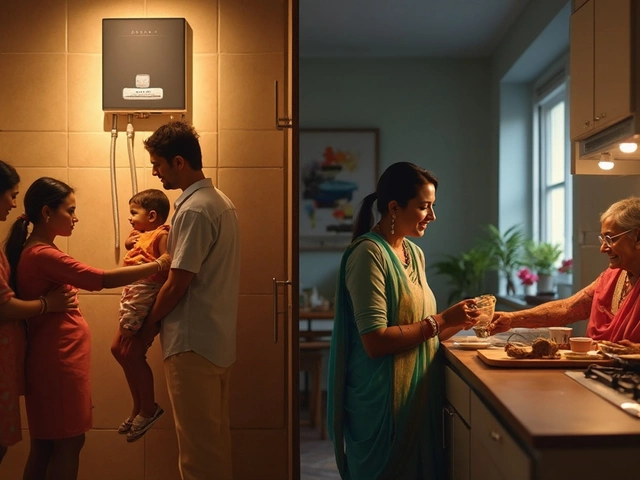So your electric hob just stopped working or is acting up? Annoying, right? Before you start searching for a brand-new one, you might be able to get your hob fixed for way less money. Most people don’t realize how fixable electric hobs actually are. Problems like burners not heating, weird noises, or even uneven cooking usually come down to things like faulty switches or old wiring—not a death sentence for your appliance.
Here’s the good news: Repairing is often way cheaper than replacing the whole setup, especially if the main glass or metal surface is fine. Parts like thermostats, control dials, heating elements, or the wiring can often be swapped out without much fuss. Sometimes you can even fix minor issues yourself if you’ve got a few basic tools and some curiosity.
Of course, not every repair is worth the hassle. If the fix is going to cost as much as a new hob (or more), or if you’re dealing with broken glass or damaged electronic circuit boards, it might be time to move on. But for a lot of common problems, a quick repair can buy you years of extra use—all without redoing your kitchen.
- How Electric Hobs Work (and Why They Break)
- Common Electric Hob Problems and Diagnosis
- DIY Fixes Versus Professional Repairs
- When to Repair or Replace Your Hob
How Electric Hobs Work (and Why They Break)
Electric hobs are pretty straightforward when you look under the hood. You’ve got heating elements—those are either visible metal coils or tucked away under a ceramic glass surface—that heat up when you turn the dial. Power flows from your home’s mains supply, passes through controls like thermostats and switches, and finally reaches the element. That’s how your frying pan gets hot.
But here’s what really matters: each part in that chain can fail. If your hob isn’t working right, it’s almost always one of these usual suspects:
- The heating element itself (burns out or breaks)
- Temperature controls or switches (get sticky or stop clicking)
- Wiring/connectors (loosen up or corrode)
- Indicator lights (just stop shining—annoying but not deadly)
To put it in perspective, here’s a simple table showing the most common issues with electric hobs, how often they happen, and what usually causes them:
| Problem | How Often (%) | Usual Cause |
|---|---|---|
| Burner Not Heating | 42 | Element failure, loose wiring |
| Switch/Control Fault | 25 | Worn out or damaged knob/switch |
| Hob Not Turning On at All | 18 | Fuse issue, bad connection |
| Uneven Heating | 10 | Partial element burnout |
| Indicator Light Fault | 5 | Bulb burnout, wiring fault |
Most faults are not mysterious—they’re just basic electrical wear and tear. Power surges, heavy pans dropped on the surface, or just plain age can mess with your hob. Ceramic models are particularly sensitive to impacts and to liquids spilling into spaces where wiring sits. And if you don’t clean up grease and crumbs? Yeah, they can gum up switches and even short things out over time.
The big takeaway? Electric hob repair is usually about finding exactly where the break is—nothing too magical or impossible to understand. Spotting a dodgy switch or a dead element early on can keep the repairs simple and affordable.
Common Electric Hob Problems and Diagnosis
Electric hobs can act up for all sorts of reasons, but the good news is most issues aren’t as mysterious as they seem. Here are the classic problems people run into with these appliances—and simple ways to figure out what’s going on.
- Burner won't heat up: This one tops the list. The element itself could have burned out, or maybe the wiring to the element is loose or melted. Other times, the problem is with the control switch (those knobs aren’t just for looks—they can wear out!).
- Hob only heats sometimes: If your hob works off and on, that’s usually a bad connection in the wiring or a faulty thermostat. Sometimes, moisture or spilled food has sneaked inside, causing a short.
- Indicator lights stuck on or off: Most electric hobs have little lights that show when they’re hot or on. If the light won’t turn off, the control board or indicator bulb might be to blame. If the light never comes on, that’s often a blown bulb or bad wiring.
- Hob trips the circuit breaker: If every time you turn on a burner your kitchen goes dark, that's usually a sign of a short circuit in the hob’s wiring, element, or plug. This one’s important—don’t ignore it.
- Weird noises or burning smells: Any buzzing, crackling, or odd odor usually means something inside is overheating or arcing. This needs attention right away before things get worse.
Diagnosing faults is easier if you look for clues. For starters, try swapping working control knobs between burners. If the fault moves, it’s the knob or control switch, not the heating element. For persistent issues, unplug the hob first and check the wiring and connection blocks for signs of melting or burning. If you spot any damaged wires, that’s likely your culprit. And if you’re not comfortable opening up the hob, don’t risk it—bad electric jobs can be dangerous.
One tip if you have a ceramic or glass hob: If a whole section isn’t working, the issue could be the main terminal block. These sometimes loosen over time, especially with heavy use. Getting to it can be a pain, but it’s a classic trouble spot.
If your electric hob repair involves random heating or digital display errors, circuit boards can fail, especially after years of kitchen steam and spills. For these, you might need a pro—with replacement boards running between £50 and £150 depending on the model.
Keep a close eye for anything odd, especially if more than one issue pops up at once. Sometimes it’s not a single part, but a mix of small problems adding up. Always check your warranty before diving into repairs—some brands will fix common faults free if you’re still covered.

DIY Fixes Versus Professional Repairs
If your electric hob repair is what you're after, the first thing to ask is what’s actually wrong. Some jobs are simple and safe for a handy person, while others are best left to someone who makes a living fixing appliances.
For the DIY crowd, you can usually tackle the small stuff yourself. Here are a few things regular people commonly sort out at home:
- Tripped circuit breakers: If your hob suddenly stops working, check your fuse box first. Resetting the breaker often brings it right back to life.
- Loose or broken knobs: Most hob knobs just pull off and snap back in. You can buy replacements online or at hardware stores.
- Cleaning up burnt-on food: Built-up gunk on contacts can stop burners from heating properly. A careful clean—while the hob is off and cool—might fix the issue.
But other tasks, especially anything involving internal wiring or the glass top, should make you pause. Professional repairers have the tools for live voltage checks, safe disassembly, and specialty parts—stuff most folks just don’t have at home. Specific issues like a broken heating element, a faulty thermostat deep inside, or cracked glass top means you really should call an expert. Playing around with these can give you a serious electric shock or mess up your appliance for good.
One more thing: if your hob is under warranty, don’t try to open it up yourself. DIY attempts can void the warranty instantly. Always check first so you don’t blow your coverage.
Bottom line: Reset the fuse, swap a knob, or clean it up yourself. When it comes to wires or big broken parts, though, don’t risk it—call in someone who does this for a living. It’s not just about money—it’s about doing things safely and correctly.
When to Repair or Replace Your Hob
It’s tempting to just call it quits when your electric hob starts messing up, but sometimes a repair makes way more sense. Knowing when to fix things and when to throw in the towel is all about looking at cost, safety, and how old your hob actually is.
If the problem is just a busted heating element, dead control knob, or faulty wiring, a repair usually costs a lot less than buying a new unit. Here’s a quick breakdown of typical repair costs versus replacement in the UK:
| Problem | Average Repair Cost (£) | Replacement Cost (£) |
|---|---|---|
| Heating Element | 70 – 120 | 200 – 600 |
| Control Switch | 60 – 100 | 200 – 600 |
| Glass Top | 180 – 300 | 200 – 700 |
| Full Replacement | - | 200 – 700 |
If the repair is less than half the price of a new hob, most experts say it’s the smart move. It’s worth repairing especially if your hob is under 7 or 8 years old—these things often run for a decade or longer with some TLC.
- If you notice weird burning smells, see smoke, or the hob is tripping your fuse box, switch it off at the mains ASAP. Those are safety red flags worth paying for a pro to check out.
- Electric hob repair is usually a no-brainer for minor issues: a burner won’t heat, the display flashes error codes, or a knob is loose. Parts are readily available for most brands, including Bosch, Hotpoint, and Beko, and a proper fix might take less than an hour.
- If the main circuit board is fried or the glass is badly cracked, replacement often makes more sense—especially with cheaper models or if your hob is 10 years old or more.
When your warranty is still active, always check with the manufacturer first. Some brands cover spare parts and labour if it’s a common fault, which saves you more money.
The bottom line: Do a quick comparison of what the part or pro visit will cost versus the price of a brand-new hob. If repairs are frequent or the appliance needs more than one part, that’s a sign it’s nearly at the end of its run. But for single, small faults, give repair a chance before heading to the appliance shop.



